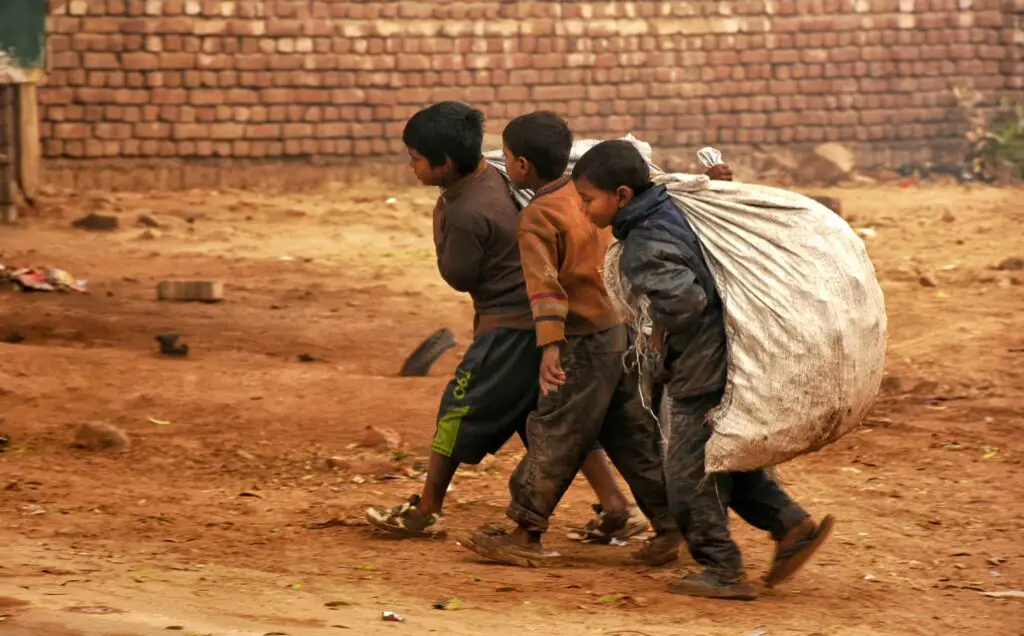Ecosystems are the busy, living web of plants, animals, and tiny microbes that work together with their surroundings. Over recent decades, this web has been tugged and torn in many places, causing warmer climates, fewer species, and poorer soils-a mix people now call “”ecosystem changes.” When nature struggles, we all notice in one way or another, yet the quickest and loudest worry is usually public health. This article looks at how new farms, lost wildlife, and erratic weather team up to affect our well-being-and shares simple steps we can take to fight back.
Why Ecosystem Changes Matter for Our Health
The costs of damaged ecosystems show up both close to home and half a world away. Take the slow loss of greenery in dry and semi-dry areas; over time, that process turns land toward desert. With fewer plants, air grows dustier, storms carry grit for hundreds of miles, clean water dwindles, and mosquitoes or other carriers spread farther and faster, all of which hurt peoples lungs, bellies, and spirits.

What Are Ecosystem Changes?
Definition and Examples
Ecosystem changes happen when the basic way a natural area works gets turned upside-down. This shift might be caused by people driving cars, cutting down forests, or farming too heavily, but it can also come from nature-witness a lengthy drought or a huge wildfire. When the new balance sticks around, soil can erode, streams dry up, and both nature and nearby communities pay the price in sickness and hunger.
Types of Affected Ecosystems
- Drylands: Places that barely see rain are the first to show signs of trouble, slipping slowly into real deserts when overgrazing or bad irrigation steals moisture.
- Forests: Huge swathes of trees removed at once take away animal homes, release locked-up carbon, and even hurt city people by dirtying air and muddying streams.
- Inland Waters: Rivers, ponds, and swamps hit by trash, chemicals, or too many pipes running dry can leave neighborhoods short on drinking water and increase illness.

Linking Ecosystem Changes to Human Health
Impact on Food and Nutrition
- Reduced Soil Fertility: Drier dirt that’s lost its life-supporting minerals just will not grow enough grain, beans, or tubers. Communities already on the edge then face a bigger chance of hunger.
- Loss of Crop Diversity: Over-farmed, stressed land tends to push out one or two tough plant types. When that happens, families lose colorful fruits and greens that supply the tiny vitamins keeping them strong.
How Deteriorating Ecosystems Affect Daily Life:
- Healthy communities need dependable water, food, and a clean environment. When nature breaks down, everyday life and public health can take serious hits.
- When staple crops fail, food shortages push grocery prices upward, putting nutritious options out of reach for vulnerable households.
Water Scarcity and Sanitation
Water touches nearly every part of life. Damage to local ecosystems too often shows up in people’s taps, toilets, and fields:
- Overdrawn Aquifers: Hitting groundwater with heavy irrigation and little rain slowly drains reserves, leaving families with just muddy, polluted sources.
- Poor Sanitation: Fewer clean supplies mean soap and latrines sit unused, spreading diarrhea and cholera through crowded neighborhoods.
- Increased Drought Frequency: Lengthening dry seasons—linked to global warming—stunt harvests and stress herders, pushing markets toward higher food costs.
Respiratory and Infectious Diseases
A sick environment also fuels disease outbreaks:
- Dust Storms: Stripped land blows up clouds of grit that choke babies, elders, and workers, triggering asthma attacks and lung infections.
- Changing Disease Patterns: Warmer, wetter conditions invite mosquitoes into new valleys and hills, speeding malaria, dengue, and other bites carrying deaths.
Mental Health and Community Well-Being
Physical troubles arrive side-by-side with psychological wounds:
- Stress and Anxiety: Constant worry about failing crops or thirsty livestock scars farm families with long-running depression and stress disorders, unraveling local social fabric.
- Migration and conflict: When fields stop producing, families pack up hoping to find work elsewhere. That search often puts neighbors side by side who have little in common, stirring arguments and taking a toll on everyone’s peace of mind.
The Role of Biodiversity in Public Health
Biodiversity is just a fancy word for the different plants, animals, and tiny life forms living in one place. All that variety keeps nature running smoothly and helps it bounce back after hard times. Because of that, its health is closely tied to ours:
- Disease Regulation: A mix of local species keeps pests in check. When farms plant the same crop over and over—or when wild plants disappear—the bug and germ outbreaks usually get worse.
- Nutrient Cycling and Water Purification: Diverse roots, worms, and microbes work together to clean water and recycle food skimmed from the soil, benefits we rely on every single day.
- Medicinal Values: Aspirin from willow bark or cancer drugs from soil fungi remind us that many cures start with living things. Losing even one species can mean losing a promise of tomorrow’s medicine.
Socioeconomic Factors and Vulnerable Groups
Poverty and Land Degradation
Dryland communities are used to drought, yet each new season of poor rains gnaws deeper at their staysrtretry. When soil turns to dust and gardens die, families harvest little food, sell even less, and the cycle of hunger and sickness tightens around them.
- Limited Health Services: When hospitals and clinics are few and under-staffed, babies are more likely to die before their first birthday and people tend to live shorter lives overall.
- Unequal Access to Nutrition: Sky-high food prices, busted transport routes, and a shortage of decent jobs keep vulnerable groups—especially kids—from getting enough to eat.
Cultural and Local Knowledge
Nomadic herders, desert gardeners, and rain-water harvesters have kept communities alive in dry places for generations, yet directives hatched in far-off offices can wipe out those methods and damage land, making illness much more common.
Global Climate Change and Desertification
The Vicious Cycle
Desert expansion and rising temperatures feed off each other: sparser plants mean more dust in the air and less carbon locked in soil, which speeds up warming and throws weather into chaos.
Intensified Droughts: Hotter days and nights suck up moisture faster than it can fall, stretching dry spells and leaving taps, rivers, and wells nearly empty.
Reduced Nutrient Availability: Worn-out earth loses the worms, roots, and rotting leaves that hold water, so even the hardiest seeds struggle to grow.
Worldwide Ripple Effects
Dust storms that start in one desert can ride the wind for hundreds or even thousands of kilometers. Along that journey the airborne grit can carry germs, heavy metals, and other pollutants. Because of this, cities located far from where land lost its cover still record sudden jumps in asthma and other lung problems. Change the ground in one spot, and the health headline a continent away might look the same.
Prevention and Policy Solutions
Sustainable Land and Water Management
- Soil Conservation Practices: Simple actions like terracing hills or rotating crops each season work wonders for soil life and fertility.
- Rainwater Harvesting: Building a small cistern or a walled reservoir lets spring and summer showers keep crops green during dry months.
- Rotational Grazing: Moving cattle every few weeks gives tired pastures time to bounce back with fresh grass and root strength.
Biodiversity Conservation and Restoration
Overhauling wetlands and replanting forests do much more than dress a planet-wide need; healthier ecosystems protect public health day by day.
- Reforestation: A row of hardy saplings slows mudslide damage, soaks up carbon, and even cools the air around homesteads.
- Habitat Rehabilitation: Natives stripes, thistles, and reeds form a living shield that keeps disease-carrying creatures in check.
Community Engagement
Actions work best when the people living the problem sit at the planning table. Farmers, shepherds, and town councils know their land story better than any outside expert.
- Local Training: Workshops that show how to restore soil or save water can lift crop yields and family health, one village at a time.
- Incentives for Sustainability: Small grants or targeted subsidies can nudge low-income families toward greener farming.
Cross-sector Collaboration
When policies fix only agriculture while ignoring health or the environment, progress is patchy. Treating land care, health services, and ecosystem management as one boosts a communitys ability to cope with climate swings, water shortages, and new diseases.
Looking Ahead: Building Resilience
Long-term plans need solid ways to track change over time.
- Monitoring and Assessment – Regular checks by satellites and local volunteers show how land and water behave year after year.
- Remote Sensing – Reliable satellite images reveal trends in plants and water so problems can be seen early.
- Baseline Development Setting clear starting numbers lets scientists and locals know whether things are getting better or worse.
Education and Innovation
- To strengthen resilience, governments, charities, and community groups can offer:
- Educational Workshops Classes on agroecology and wildlife care teach young farmers to protect the soil.
- Technological Solutions Solar pumps, drip lines, and digital maps give families tools to adjust to uncertain weather.
- Alternative Livelihoods Businesses like small-scale aquaculture or eco-tourism provide fresh income and take pressure off overworked fields.
Conclusion
When forests vanish, deserts spread, or entire species vanish, the ripple effects land squarely on our health. Residents of dry, damaged areas tend to eat less, breathe worse, and catch more diseases. Lower crop yields squeeze local economies, forcing families to leave home in search of food and work. The fallout is wider than lost dollars: friendships fray, anxiety rises, and the risk of violence grows.
The news is serious, but defeatism solves nothing. Smart water use, small-scale conservation, and strong laws can mend, even boost, damaged lands. Health thrives when ecosystems do, and healthy communities lower healthcare costs and keep social ties strong. By uniting scientists, neighbors, and decision-makers around this truth, we can protect incomes today and preserve public health for tomorrow.
Frequently Asked Questions (FAQs)
What Is the Most Urgent Health Issue Related to Ecosystem Change?
Malnutrition is arguably the biggest immediate concern, since falling harvests and fewer nourishing foods hit families hardest. Close behind are outbreaks of waterborne diseases and respiratory trouble stirred up by dusty storms.
How Can I Support Local Conservation Efforts?
You can roll up your sleeves for tree-planting days, speak up for projects that work with nature, or give to groups guarding drylands that communities depend on.
Are Policy Changes or Grassroots Initiatives More Effective?
You really need both. Policy lays down rules for land use, but community projects keep those rules grounded in everyday life and often spark wider change.
Which Organizations Help Tackle Both Environmental and Health Concerns?
Global agencies like the United Nations Environment Programme, plus nonprofits that promote sustainable farming, run programs linking healthy people with healthy ecosystems.
